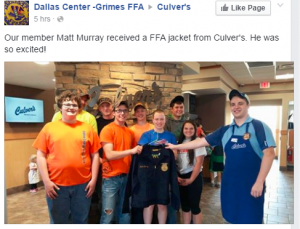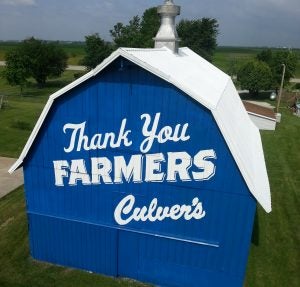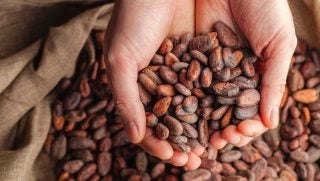There’s hardly a farmer out there who doesn’t love what Culver’s stands for and respect how deeply the restaurant chain has worked to support the ag industry. From community fundraising to the blue barns thanking farmers, the Sauk City, Wisconsin-based company has made a 34-year career of standing shoulder to shoulder with our nation’s growers.
While most of us are well acquainted with the famous butterburgers (named because the crown of the bun is lightly toasted and buttered) and the fresh frozen custard (made every few hours at each location), many don’t realize how much Culver’s truly does to help the current and future generation of agriculture.
Take a look at some of the efforts Culver’s is putting forth. There is so much here to chew on, and there’s even more — such as corn mazes, Seeds of Gratitude, and #FarmingFridays — that go beyond this list!
Thank You Farmers
This is really the overarching brand name for Culver’s far-reaching initiatives celebrating ag. Culver’s has created several avenues for raising money for FFA, 4-H, or other community agricultural organization. For example, restaurants across the nation will have share nights, where a percentage of sales will go back to a featured ag group. It’s a way to help the farming community, but also to help put the spotlight on the folks who grow our food.
In the past five years, the company has raised more than $1.7 million, and the majority of those dollars stay local in the communities.
“Without the hard work of farmers and ranchers and producers, we would not be able to serve food sustainably. We want to ensure the future of that, which is why we want to support ag education,” said Jessie Kreke, Culver’s senior marketing manager.
Another example is Scoops of Thanks Day, where in 2017 guests purchased 43,955 scoops of fresh frozen custard and raised over $50,000 for FFA chapters.

Blue Jacket Program
“This is so much more than just a jacket that they wear to events and competitions. This is a true symbol and memory of what FFA stands for,” Kreke said.
That’s why in 2016, Culver’s started a program to donate FFA jackets for students who are nominated by their advisers. So far, more than 500 jackets have been donated to students.
Oftentimes, individual restaurants, which are owned by local franchisees, will sponsor the jackets and will get to award jackets to young people in their area. However, the central office for Culver’s sponsors many jackets, as well, since Culver’s is in 24 of our 50 states, and not every deserving students has a restaurant location nearby.
FFA Essay Contest
The Culver’s Essay Contest drew 653 submissions this past year, up from 400 three years ago when it began. The company asked FFA students how they want to tell people about agriculture and what they would like to do to promote it.
Winners and their chapters get thousands of dollars to help fund a trip to the FFA National Convention. The convention is such an amazing event that “we wanted to make sure that as many students as possible could experience that,” Kreke said.
She even recalls the excitement in the contest’s first year over a small chapter in Idaho that won. The school had only about 80 students total, but 35 were in FFA. And the school was so remote that flying to the nearest airport and driving from there would have taken days. (Idaho’s only Culver’s location at the time helped facilitate delivery of the $10,000 prize during a special school assembly.)

Blue Barns
If you’ve hit the right road in Wisconsin, Illinois, or Indiana, then there’s a chance you’ve seen one of Culver’s impressive Thank You Farmers blue barns. The idea began with a barn near Beaver Dam, Wisconsin, and has begun to spread as a way to very publicly thank our hardworking men and women in agriculture.
Because of the Highway Beautification Act, there’s a surprisingly large amount of red tape that goes into making a blue barn, so there are only four set up so far. But offerings come in fairly regularly to keep expanding.
“We love these symbols and the message it shares in that we can thank farmers for all they do,” Kreke said.


